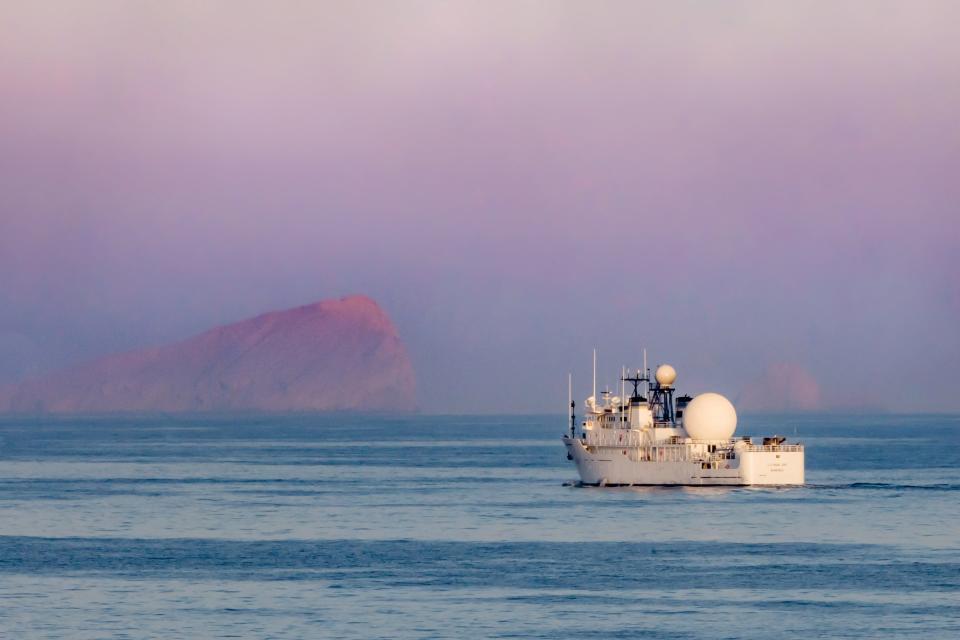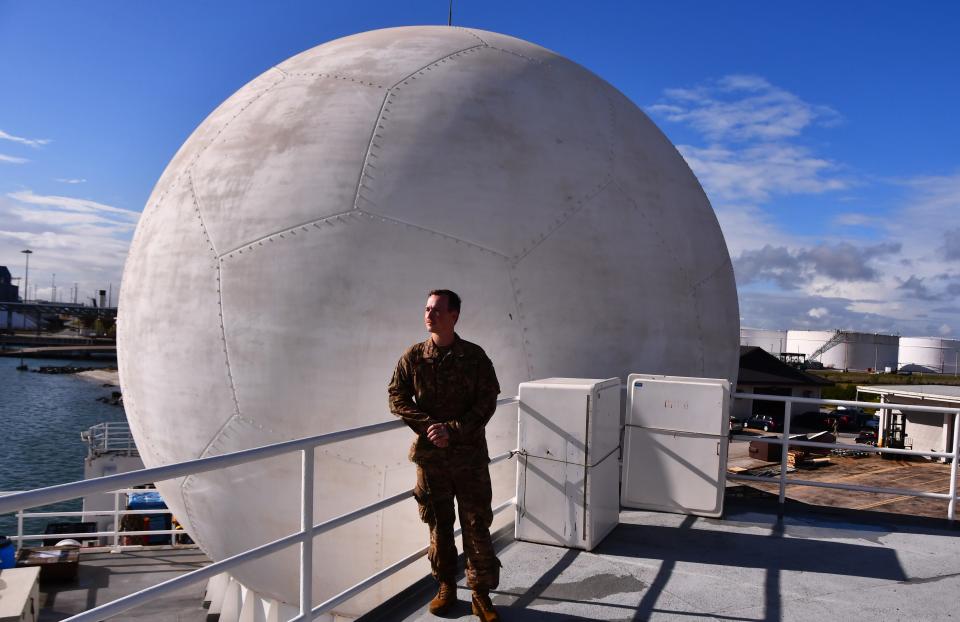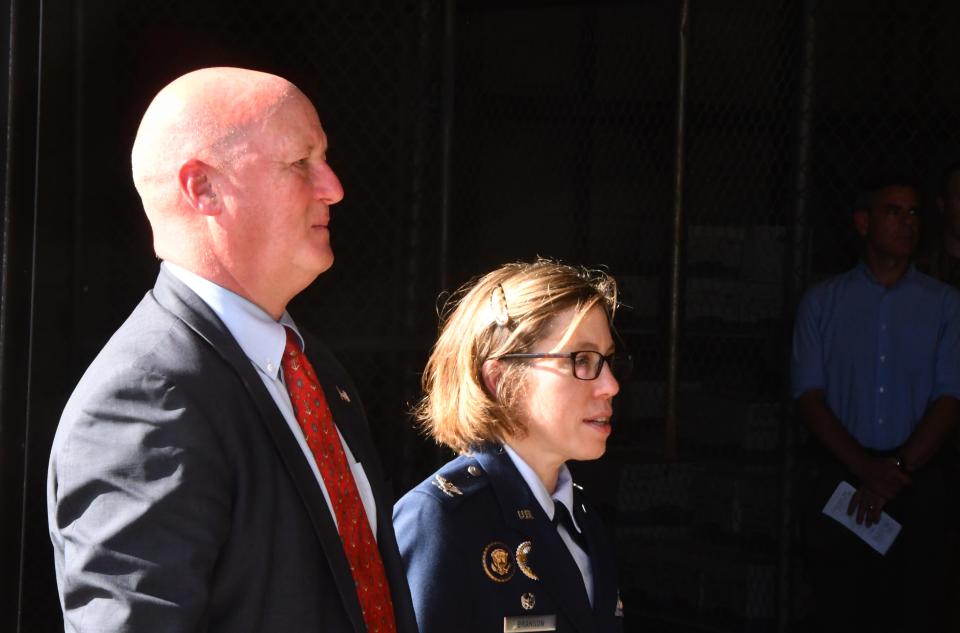Navy missile-radar ship Invincible ends global mission during Cape Canaveral ceremony
A ship of the Cold War, the USNS Invincible roamed the North Atlantic and Norwegian Sea during the 1980s and '90s, using its sonar array to track Soviet submarines in the icy depths.
After the Soviet Union collapsed, Invincible was retrofitted with a radar dome measuring 30 feet in diameter and started a "second career" as a missile-detecting ship — primarily in the war-torn Middle East.
The white-hulled, 224-foot ship's crew supplied missile-tracking data to Patrick Space Force Base for two decades, helping the Air Force Technical Applications Center monitor the planet for nuclear-treaty compliance.
"As you read the news every day, it is no secret that missile warning and defense in monitoring adversaries' capabilities is becoming increasingly important to global security," said Christopher Thayer, director of maritime operations with Military Sealift Command.
"With that overview, we have the opportunity to reflect on Invincible's accomplishments and all that the ship and crews have done in the years to contribute to the security of our nation," Thayer said.
"I like to call her 'the little ship that could,' " he said.
More: USS Indiana submarine commissioned during Navy ceremony at Port Canaveral
Wednesday, Thayer detailed Invincible's globetrotting history during the tracking ship's mission "inactivation ceremony" at the U.S. Army Transportation Wharf at Cape Canaveral Space Force Station.
After 36 years of operation, the U.S. Maritime Administration will repurpose the surveillance vessel. And the radar system will be redeployed by the Air Force Research Laboratory.
"Today's ceremony does not necessarily mark the end of the line for this vessel. Rather, it symbolizes a transition, which occurs in the life of every ship," Thayer told the audience.
"We have heard — and hope — that Invincible may in fact have a third act and sail as a Maritime Administration training ship at one of the state maritime schools, training future mariners for this great country," Thayer said.

Invincible was home to thousands of mariners, sailors, airmen and contractors over the years. The ship was permanently "forward-deployed" during operation, so it had no home port.
The Tacoma Boatbuilding Co. laid Invincible's keel in May 1986 in Washington state.
After entering naval service the next year, the ship conducted 32 90-day deployments tracking Soviet submarines before being deactivated in 1995, Thayer said.
After spending three years mothballed at the Norfolk Naval Shipyard in Portsmouth, Virginia, crews retrofitted the ship with its missile-tracking Gray Star dual-band radar platform in 1999. Invincible was reclassified in 2000.
"So she went from undersea to space. During the next two decades as a missile range instrumentation ship, Invincible collected data on 73 different systems — primarily in the Middle East," Thayer said.

Based at Patrick Space Force Base, AFTAC is the Department of Defense's sole nuclear treaty-monitoring center. This classified facility detects and analyzes nuclear explosions detonated by foreign countries around the world.
AFTAC personnel continuously monitor an extensive array of more than 3,600 seismometers and sensors on land, sea and air across all seven continents — including space.
Air Force Capt. Richard Gayson lived aboard Invincible as mission commander from September 2020 to February. Thirty people comprised the typical crew, including a 10-person Navy security team. The bulk of the personnel were Crowley and Raytheon civilian contractors.
Fire extinguishers, hand-held lights and high-voltage electrical panels line Invincible's metal hallways, along with boxes containing cans of fruit juice and other foodstuffs. Wednesday, the banks of windows aboard the bridge offered sweeping views of Port Canaveral.
"It's mixed feelings for the inactivation. It's been a great mission," Gayson said.

Rick Neale is the South Brevard Watchdog Reporter at FLORIDA TODAY (for more of his stories, click here.) Contact Neale at 321-242-3638 or rneale@floridatoday.com. Twitter: @RickNeale1
Support local journalism. Subscribe today.
This article originally appeared on Florida Today: Navy missile-radar ship Invincible ends global mission during Cape Canaveral ceremony

